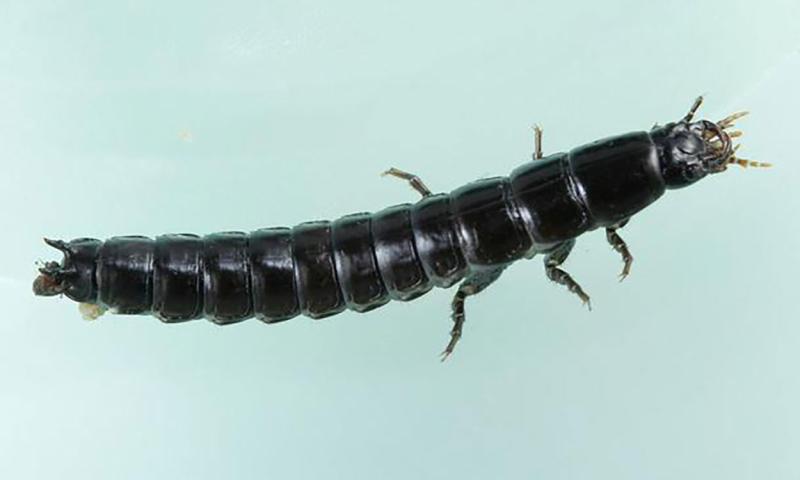
Written with contributions by Shelby Pritchard, former SDSU Extension Pest Management Specialist.
Originally Submitted: May 12, 2022
There are many insect pests that are cause for concern to both gardeners and farmers throughout South Dakota. However, it is important to remember that not all insects are pests. There are numerous species of insects that are beneficial to the landscape. In this article we will highlight ground beetles and their importance to both garden and agricultural landscapes. The name ground beetle is used to describe a group of beetles that are comprised of approximately 2,440 species in North America.
Lifecycle and Identification
Adult ground beetles vary in color and size depending on the species. They are most commonly black or brown to iridescent green or bronze. They range in size from approximately 1/10 to 1 ¾ inches-long and have longitudinal ridges along their forewings (elytra) (Figure 1-A). They have long, thread-like antennae, large eyes and a distinct bean-shaped appendage (trochanter) on both hind legs (Figure 1-B). Ground beetles also have well-developed and often large mouthparts that are used for chewing prey and seeds. Ground beetles belong to the family Carabidae within the order Coleoptera (beetles).

In South Dakota, most species of ground beetles have one generation per year and overwinter as adults in leaf litter or other sheltered areas. Many species of ground beetles are nocturnal and have a life span of 2 to 4 years. Once adults emerge, they mate and lay eggs near the soil surface. Larvae are soil dwellers and undergo three growth stages (instars) before reaching maturity. Ground beetle larvae can be categorized by their distinct body segments and dense exoskeleton, but their color and size vary by species (Figure 2).
Feeding Behavior
Both larvae and adults are voracious predators and can consume up to their body weight in prey each day (Figure 3). Common prey insects include, but are not limited to wireworms, maggots, ants, aphids, caterpillars (armyworms and cutworms) and beetle larvae (cucumber beetle and Colorado potato beetle).

Ground beetles are primarily nocturnal hunters, and they are capable of moving very quickly, which aides in catching prey and avoiding other predators. However, some species will feed on weed seeds. Ground beetles can be very beneficial to agroecosystems and gardens struggling with both weeds and insect pests.
Management
Ground beetles can occasionally become a nuisance pest when found indoors. They are accidental invaders that do not feed or reproduce indoors. If possible, they should be captured and returned outside. They are considered beneficial insects and provide essential biological control in both agricultural and garden settings, and, therefore, they do not require management.


